- Why HDPE Pipe is Ideal for Dredging in Harsh Marine Environments
- Performance Benefits of HDPE Pipe in Dredging Projects
- Real-World Applications of HDPE Pipe in Dredging
- Economic and Environmental Benefits
- How to Choose the Best HDPE Pipe for Dredging Projects
- What Pipes Are Used in Dredging?
- Advantages of HDPE Pipe
- Which Grade of Polyethylene Pipe is Suitable for Harsh Industrial Wastes?
- Final Thoughts on HDPE Pipes for Dredging in Harsh Marine Environments
For marine dredging projects, corrosion resistance is a primary concern. Pipes exposed to saltwater and chemicals must withstand not only the corrosive effects of these elements but also the physical stresses of high-pressure systems. In this context, HDPE pipe for dredging stands out as an ideal solution. Known for its superior corrosion resistance, HDPE pipes are also highly durable and flexible, making them perfect for challenging dredging applications.
The best HDPE pipe options offer excellent strength and chemical resistance, ensuring long-lasting performance even in the most demanding conditions. Moreover, the smooth interior of HDPE dredging pipe reduces friction, leading to improved flow efficiency and energy savings over time. This combination of benefits makes HDPE pipes an indispensable choice for dredging professionals seeking reliable, cost-effective solutions for their marine and industrial projects.
Why HDPE Pipe is Ideal for Dredging in Harsh Marine Environments
Resistance to Corrosion
Corrosion is a significant concern in dredging operations, especially in saltwater or when dealing with harsh chemicals. HDPE pipe for dredging offers excellent corrosion resistance, ensuring longevity and reliability in marine environments. Unlike metal pipes that quickly degrade in salty water, HDPE pipes maintain their structural integrity for extended periods, reducing the need for frequent replacements and minimizing maintenance costs. This corrosion resistance ensures consistent performance, even when exposed to constant water and sediments.
Durability in Extreme Conditions
Dredging environments often involve abrasive materials like heavy sediment and rocks, which can wear down pipes. HDPE dredging pipe is highly durable, offering superior impact resistance. Unlike concrete or steel, HDPE pipes don’t crack or break easily under physical stress, ensuring they stay operational even in challenging conditions. Their wear resistance helps prevent significant damage, keeping the dredging operations running smoothly.
Flexibility
HDPE pipe for dredging also offers excellent flexibility, allowing it to bend and adapt to changing marine environments and installation requirements. This flexibility simplifies installation, especially in tough terrains or tight spaces where rigid pipes would be challenging to work with. The ability to adapt makes HDPE pipes one of the best HDPE pipe options for dredging projects, improving efficiency and ensuring durability throughout the project lifecycle.
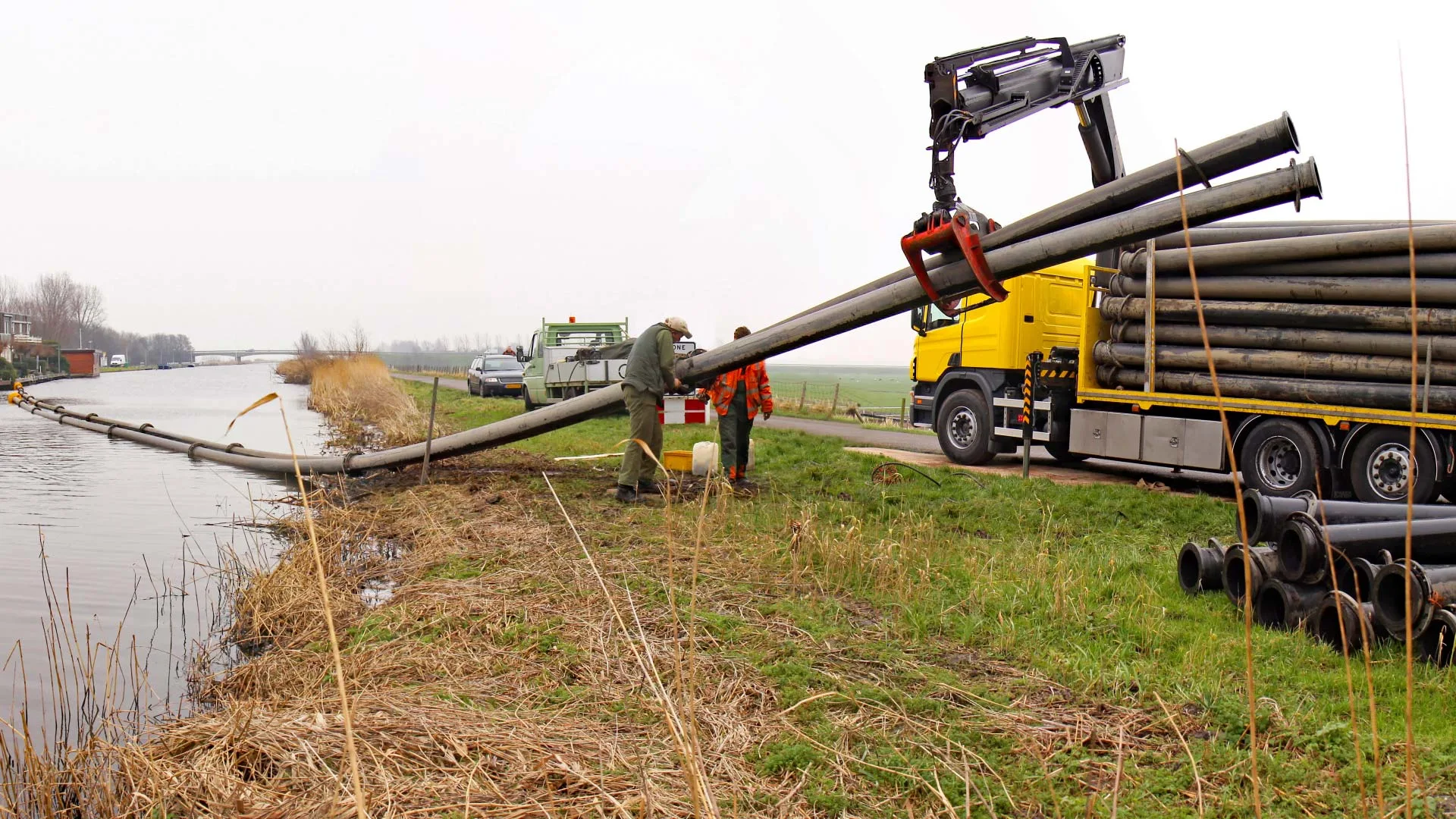
Performance Benefits of HDPE Pipe in Dredging Projects
Enhanced Flow Efficiency
A key advantage of HDPE pipe for dredging is its smooth internal surface, which enhances flow efficiency. This smoothness reduces friction, allowing dredged materials such as slurry and sediment to flow more easily through the pipes. The result is improved flow rates, which decrease the energy required for pumping operations. Over time, this efficiency lowers operational costs, making HDPE pipes an economically viable option for dredging projects.
Long-Term Performance
HDPE dredging pipe is known for its exceptional durability and low maintenance needs. These pipes are designed to last for decades without significant repairs or replacements, reducing downtime during operations. Their resistance to corrosion, abrasion, and chemicals further extends their lifespan, ensuring long-term performance and cost savings. For dredging projects, the longevity of HDPE pipes translates into fewer maintenance costs and higher reliability compared to other materials.
Resistance to Scale and Fouling
Another performance benefit of HDPE pipes is their resistance to scale and fouling. In dredging operations, sediments and debris can accumulate inside pipes, causing blockages. However, the smooth interior surface of HDPE pipe for dredging resists the buildup of materials, ensuring that flow rates remain optimal. This resistance to fouling is especially important in dredging projects, where efficiency and consistency are essential to project success. HDPE is one of the best HDPE pipe options for maintaining steady performance in these conditions.
Real-World Applications of HDPE Pipe in Dredging
Marine Dredging Projects
HDPE pipe for dredging is extensively used in marine dredging projects to maintain navigability in harbors, ports, and waterways. In coastal dredging operations, where sediment removal is necessary to prevent siltation and improve water flow, HDPE pipes have proven essential. Their corrosion resistance and durability make them ideal for long-term exposure to saltwater and sediments. As a result, HDPE dredging pipe offers a reliable, low-maintenance solution for dredging companies working in harsh marine conditions.
Mining and Oil & Gas
In the mining and oil & gas industries, HDPE pipe for dredging is commonly used to remove slurry and other materials. Offshore oil platforms, for example, rely on HDPE pipes to transport dredged materials from the ocean floor to shore-based processing facilities. HDPE pipes’ flexibility and impact resistance allow them to withstand the abrasive and corrosive conditions often found in these environments. Their strength and resilience make HDPE pipes the best HDPE pipe choice for high-demand dredging applications in these sectors.
Municipal and Military Use
Government and defense sectors also benefit from HDPE pipes in dredging applications. Municipalities utilize HDPE for flood control and stormwater management, while military operations rely on these pipes for environmental protection and maintaining naval ports. The cost-effectiveness, durability, and reliability of HDPE pipes make them an ideal choice for addressing the unique challenges of these sectors.
Economic and Environmental Benefits
Cost-Effectiveness
HDPE pipe for dredging offers significant cost advantages over other materials. While the initial installation may be slightly more expensive, the long-term savings are substantial. The durability of HDPE pipes, coupled with their low maintenance requirements, minimizes the need for frequent replacements or repairs, ultimately reducing the total cost of ownership. Additionally, HDPE pipes’ smooth internal surfaces enhance flow efficiency, reducing energy consumption and further lowering operating costs over time. This makes HDPE dredging pipe a cost-effective solution for long-term dredging projects.
Reduced Environmental Impact
HDPE is a highly sustainable material. Unlike metal or concrete pipes, which degrade and require frequent replacements, HDPE pipe for dredging can last for decades without significant wear. This longevity helps reduce waste, lowering the environmental impact associated with constant pipe replacements. Moreover, HDPE pipes are fully recyclable, making them an eco-friendly choice for dredging operations. Their durability and minimal environmental footprint make HDPE one of the best HDPE pipe options for environmentally conscious projects.
Improved ROI for Contractors and Government Buyers
The long-term benefits of HDPE pipes are clear for contractors and government buyers. With reduced maintenance costs, fewer repairs, and extended lifespans, HDPE dredging pipe ensures a higher return on investment. The reduced frequency of replacements minimizes downtime, keeping projects on schedule and within budget while enhancing overall operational efficiency.
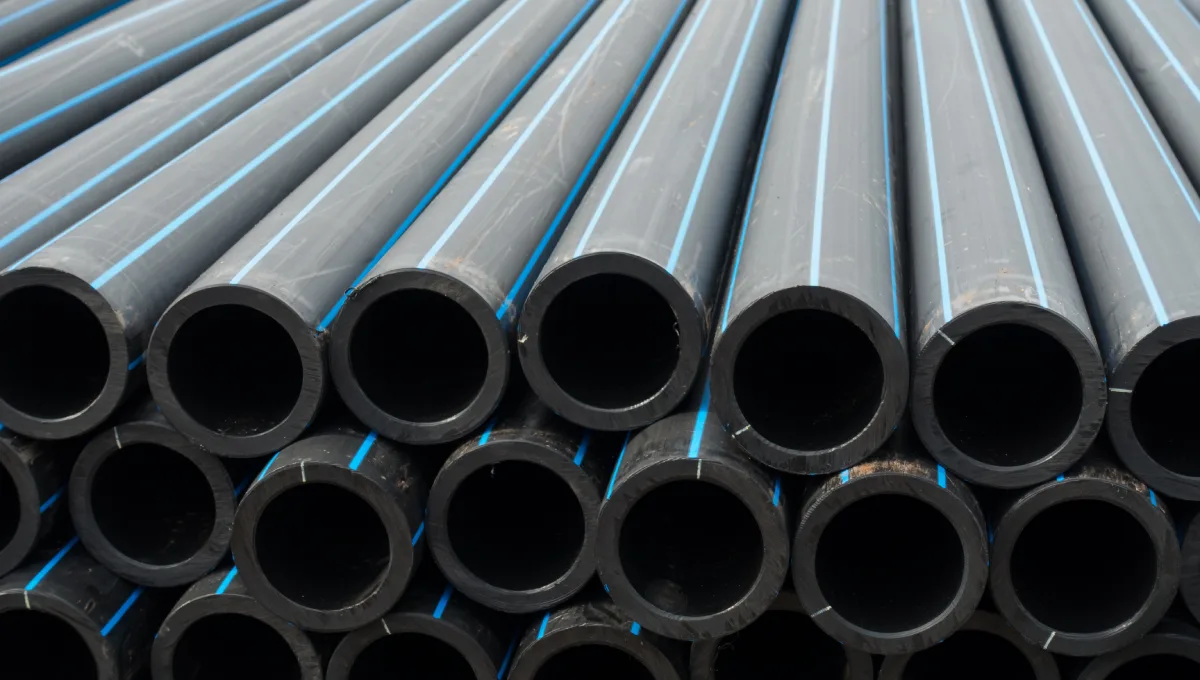
How to Choose the Best HDPE Pipe for Dredging Projects
Key Considerations
When selecting HDPE pipe for dredging, there are several critical factors to consider. The pipe thickness and diameter are essential to ensure the pipes can handle the required flow rates and pressure levels. These factors directly affect the efficiency and performance of the dredging system. The material grade also plays a key role, as it determines the pipe’s resistance to chemicals, abrasion, and physical stress. Choosing the right material grade ensures the pipe can withstand the harsh conditions of dredging operations, providing long-term reliability and durability.
Choosing the Right Supplier
Selecting a reliable supplier is crucial to ensure the quality and performance of HDPE dredging pipe. It is vital to work with a trusted supplier who offers certified HDPE products designed specifically for dredging applications. A reputable supplier will ensure that the pipes meet the necessary performance standards, guaranteeing they will perform well in demanding dredging environments. This partnership ensures the success of the project by providing high-quality, dependable products and support.
Quality Standards and Certifications
HDPE pipes used in dredging must meet industry-specific quality standards and certifications. These standards guarantee that the pipes are suitable for high-pressure, high-stress marine conditions. Complying with these certifications ensures that the best HDPE pipe option is selected for the project, providing safety and long-term durability throughout the dredging process.
What Pipes Are Used in Dredging?
HDPE Pipes
HDPE pipe for dredging is the most commonly used material in dredging operations. Known for their flexibility, resistance to abrasion, and corrosion, HDPE pipes are ideal for handling the harsh conditions of marine environments. These properties make them the preferred choice for many dredging projects, ensuring long-term performance and minimal maintenance. HDPE dredging pipe offers superior durability, reducing the need for frequent replacements and ensuring reliability in sediment transportation.
Steel Pipes
Steel pipes are sometimes used for dredging operations that require high-pressure systems. While they are strong and can handle high-pressure situations, steel pipes lack the flexibility and corrosion resistance of HDPE. This makes them less suitable for long-term exposure to saltwater and abrasive materials in marine dredging projects.
PVC Pipes
PVC pipes are typically used for lighter-duty dredging applications. Although less durable than HDPE, they can be suitable for projects with lower pressures and minimal risk of abrasion or corrosion, which makes them less suitable for demanding dredging environments. However, in non-aggressive settings, PVC can be an affordable option.
Advantages of HDPE Pipe
Strength and Durability
HDPE pipe for dredging is known for its high strength-to-density ratio, which allows it to withstand external forces such as impacts and vibrations encountered in dredging operations. This resilience makes HDPE pipes the ideal choice for maintaining performance in challenging environments.
Long Lifespan
One of the most significant advantages of HDPE pipes is their long lifespan. Even in harsh marine environments, HDPE dredging pipe can endure for decades, significantly reducing the frequency of replacements. This longevity makes them a cost-effective solution for long-term dredging projects.
Chemical Resistance
HDPE pipes offer excellent chemical resistance, which is crucial for handling abrasive and corrosive dredging materials. This resistance ensures that HDPE pipe for dredging can maintain its integrity even when exposed to various aggressive chemicals, making it one of the best HDPE pipe options for demanding dredging applications.
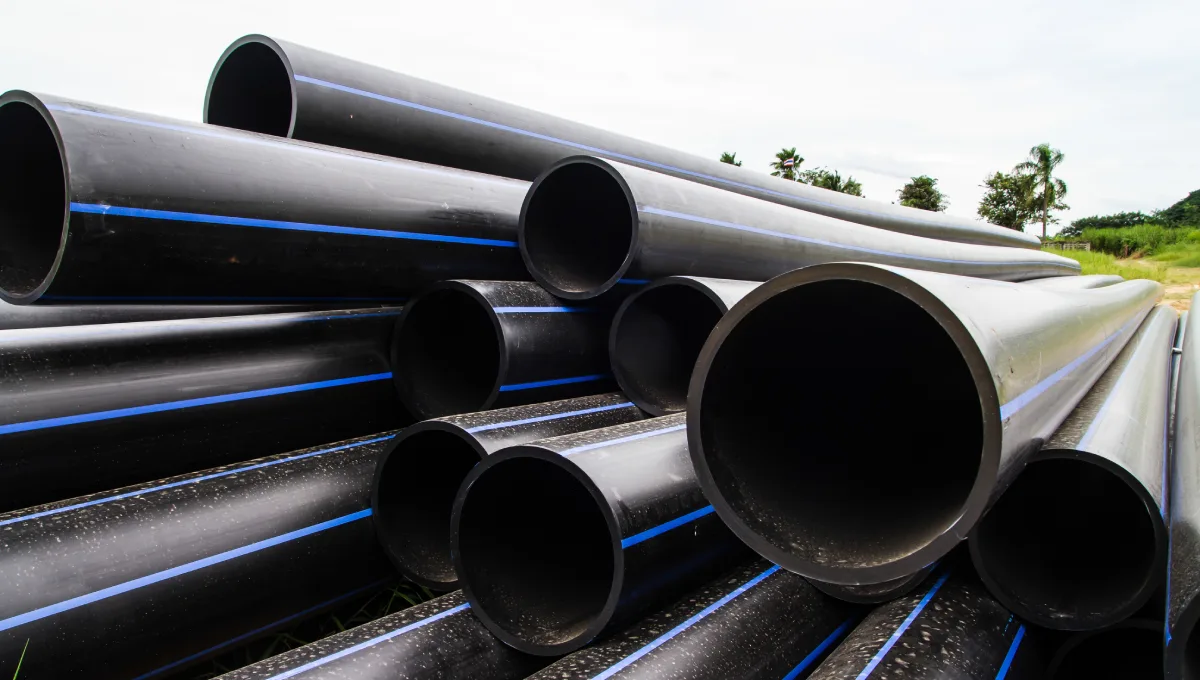
Which Grade of Polyethylene Pipe is Suitable for Harsh Industrial Wastes?
High-Density Polyethylene (HDPE)
HDPE pipe for dredging is highly effective in managing industrial waste, especially when dealing with harsh chemicals and high temperatures. For dredging applications that involve challenging conditions, such as offshore dredging or sediment removal in polluted environments, HDPE pipes in SDR 11 and SDR 17 grades are the best choice. These grades offer a balance of strength, flexibility, and resistance to both chemical corrosion and mechanical stress, making them capable of withstanding aggressive industrial waste handling.
In dredging projects where materials such as sludge or slurry are being transported, HDPE dredging pipe in these grades ensures durability and reliability over extended periods. The high impact resistance and low maintenance requirements of HDPE pipes make them well-suited for environments where durability is paramount.
PE 100 Grade
For even more demanding industrial waste applications, PE 100-grade HDPE pipes are the superior option. Offering enhanced strength and resistance to aggressive chemicals and high temperatures, PE 100 pipes are ideal for industries such as mining, chemical processing, and waste management. This grade is particularly beneficial for projects that involve highly abrasive and corrosive materials, ensuring long-lasting performance even under extreme conditions.
Choosing the best HDPE pipe for dredging and waste management projects ensures that pipes will stand up to the harshest environments, providing long-term reliability and reduced maintenance costs.
Final Thoughts on HDPE Pipes for Dredging in Harsh Marine Environments
In summary, HDPE pipe for dredging offers a durable, cost-effective, and environmentally friendly solution for dredging operations, particularly in harsh marine environments. With their exceptional corrosion resistance, flexibility, and durability, HDPE pipes are ideal for a wide range of applications, including marine, mining, oil & gas, and municipal dredging projects. These pipes excel in extreme conditions, ensuring long-term reliability and minimal maintenance, making them a top choice for contractors and decision-makers looking for a sustainable and low-maintenance solution.
The high performance of HDPE dredging pipe ensures efficient material transportation, even in abrasive and corrosive conditions. At the same time, the extended lifespan reduces the need for frequent replacements, cutting down on long-term costs. The flexibility of HDPE pipes allows them to adapt to shifting environments, making them suitable for dynamic and evolving dredging projects.
By selecting HDPE pipe for dredging, procurement heads, engineering managers, and contractors can significantly improve their return on investment (ROI), reduce operational downtime, and enhance the overall efficiency of their dredging operations. For those seeking the best HDPE pipe solutions for marine projects, exploring Anaconda Pipe & Hose’s high-performance HDPE dredging pipe options is a smart choice to ensure the success of your next dredging project.


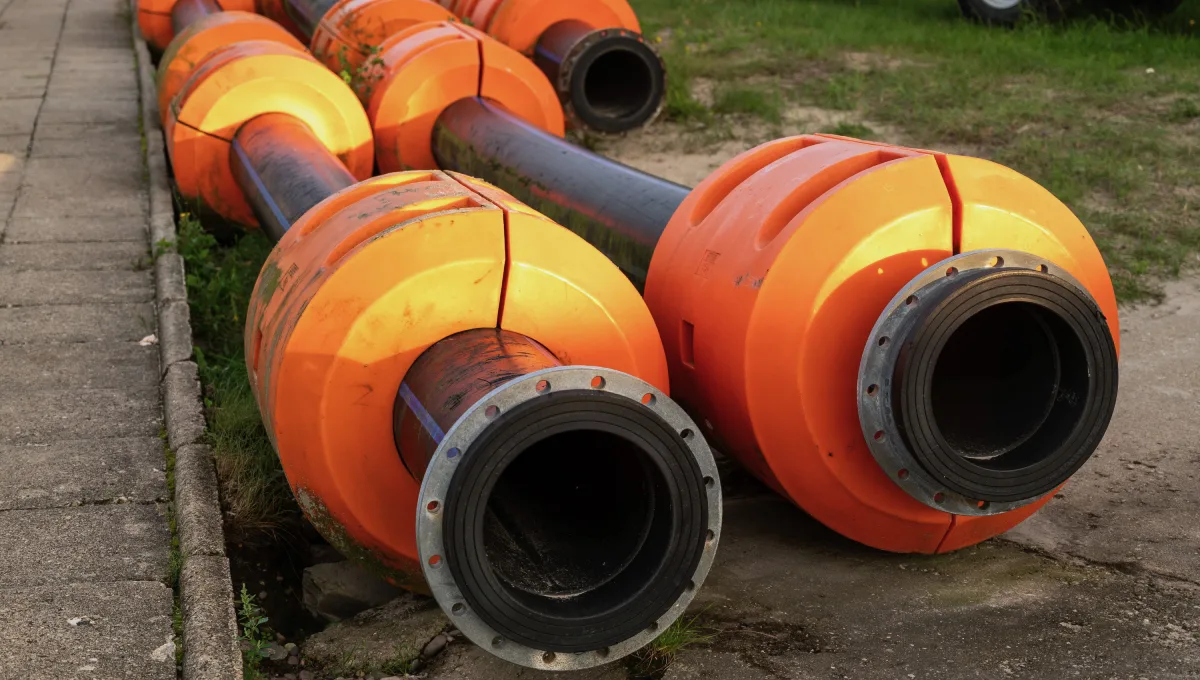

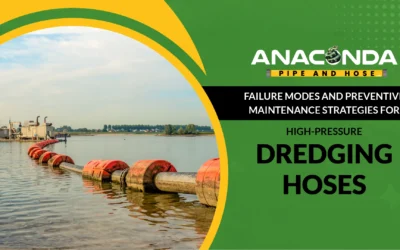
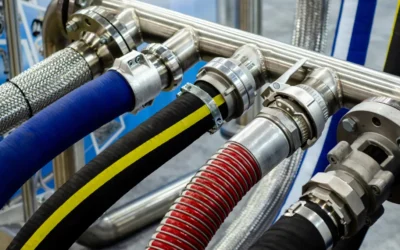
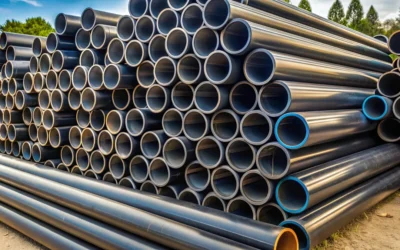
0 Comments